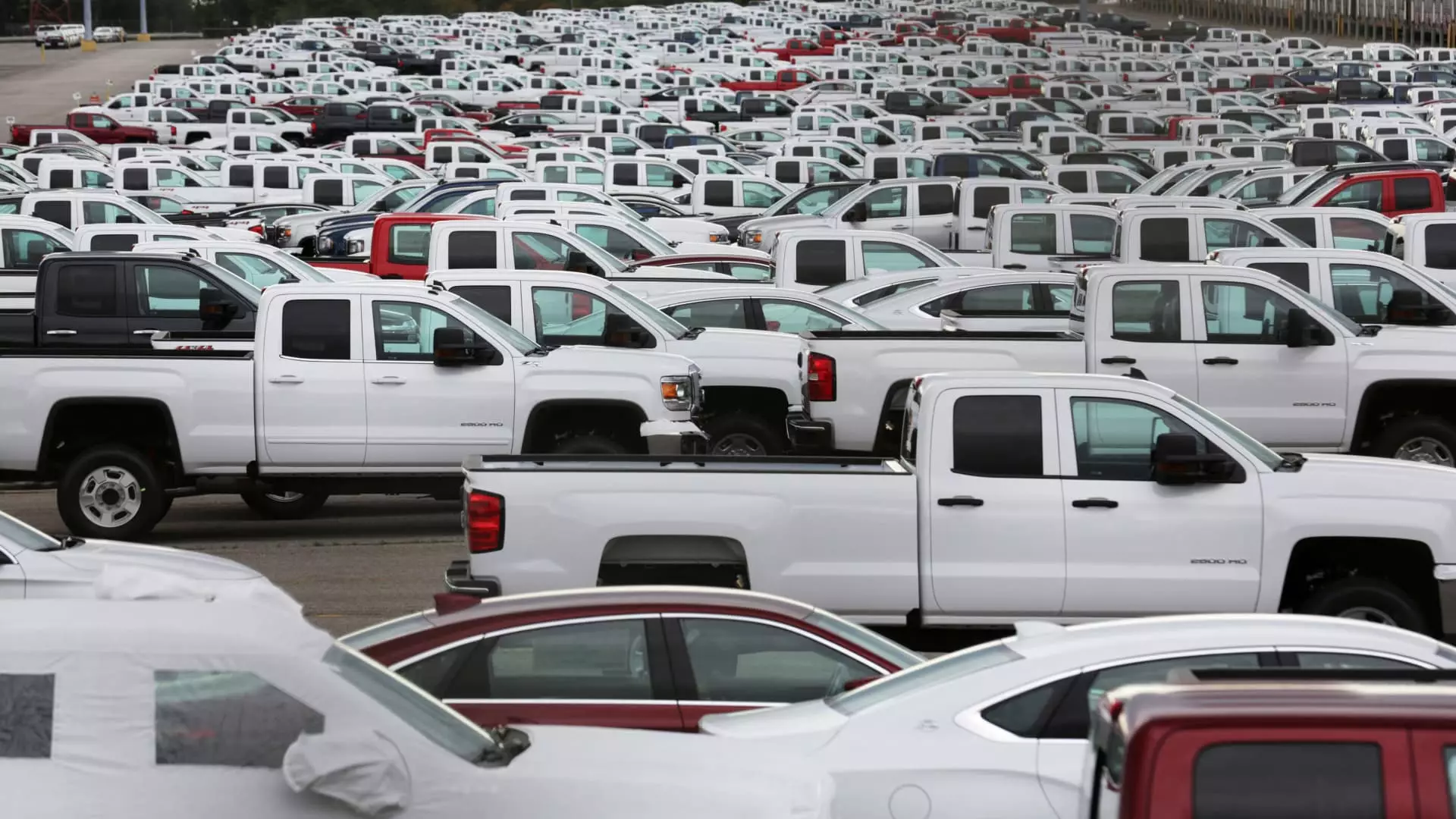The recent announcement by the Trump administration regarding a hefty 25% tariff on automobiles not manufactured in the United States sent shockwaves through the automotive industry. While several manufacturers experienced varying degrees of stock declines, General Motors (GM) emerged as the standout underperformer, with its shares plummeting by more than 6% shortly after the news broke. This stark disparity in stock performance raises critical questions about GM’s vulnerabilities in a rapidly changing economic landscape, especially in comparison to its rivals Ford and Stellantis.
Automobiles are not merely mechanical constructs; they represent the backbone of United States manufacturing. A tariff of this magnitude jeopardizes foundational aspects of the auto industry and reveals how intertwined manufacturing is with international trade. In a time where nationalism is promoted, we must scrutinize whether such tariffs will genuinely bolster U.S. jobs or merely inflate prices for consumers while harming companies with substantial overseas operations.
The GM Predicament
The crux of GM’s troubles lies in its heavy reliance on vehicle imports, particularly from Mexico. According to data from GlobalData, Mexico accounted for an alarming 16.2% of vehicle imports into the U.S., a significantly larger proportion than competitor nations such as South Korea and Japan. This elevated dependency stands in stark contrast to the stronger domestic production lines of companies like Ford, which has emphasized assembling a greater majority of its U.S.-sold units Stateside. GM’s exposure is significantly greater than that of its competitors, leaving it vulnerable in the face of aggressive tariffs.
What makes GM’s situation especially precarious is the volume of its vehicles that are assembled outside the U.S. According to research from Barclays analyst Dan Levy, while 52% of GM’s U.S. sales are produced domestically, the remaining 48% relies on foreign assembly and components. This creates a tumultuous situation; the company not only risks incurring steep tariffs on imports, but it could also face increased production costs shifting to domestic manufacturing. This structural vulnerability is an open wound that only seems to fester further in response to punitive tariffs.
Comparative Analysis: The Competitive Landscape
In stark contrast to GM, Ford has mastered the art of risk mitigation via its manufacturing strategy. Ford’s vehicles are predominantly assembled in the U.S., with only 21% coming from Canada and Mexico. Thus, while Ford’s stock also took a hit—albeit a more modest 3%—it is clear that Ford is more strategically insulated from tariff-related shocks. Stellantis similarly performed better, with 57% of its vehicles being assembled domestically. This begs the question: Has GM lost its edge in a competitive marketplace where assembly location matters more than ever?
The additional layers of risk for GM come from continuously outsourcing production to Mexico and South Korea, particularly for compact models such as the Equinox and Blazer. The need for American manufacturers to prioritize domestic production has never felt more urgent, especially when political climates promote protectionism. This could compel GM to rebalance its supply chains, but such a transition demands time, resource allocation, and strategic foresight.
The Broader Economic Implications
The knock-on effects of these tariffs extend beyond mere financial metrics. For workers and communities dependent on the stability of GM’s operations—as well as those in the supply chain spillover—the consequences could be dire. If GM struggles to adapt, jobs could be at risk, and the very fabric of industrial stability for thousands might unravel.
Furthermore, the nature of these tariffs brings about a critical economic question: who ultimately bears the burden? If GM hikes prices in response to tariffs, consumers will feel the strain. This raises concerns over how tariffs, initially pitched as a protective measure for the American worker, may inadvertently lead to job cuts and increased consumer costs. Economically speaking, this feels like a lose-lose scenario masquerading as a nationalistic win.
The automotive industry is at a crossroads, and GM stands teetering on a precipice. The company must act decisively lest it becomes a cautionary tale amid an era of economic tumult, where shifting trade dynamics redefine competitive power plays in American manufacturing. Resilience and adaptability will be the keys to not just surviving, but thriving in this transformed landscape.

